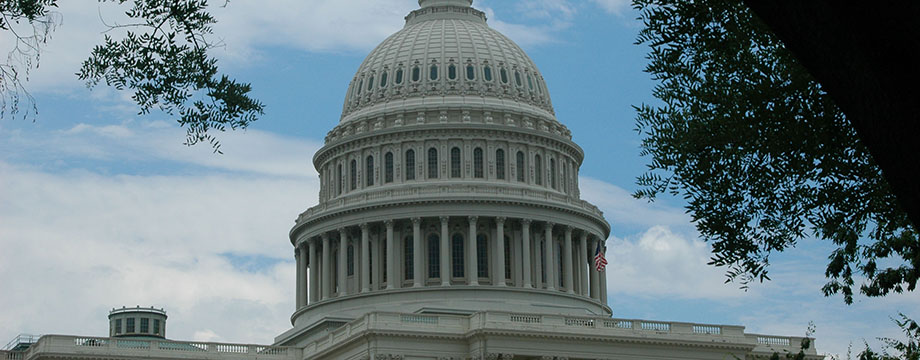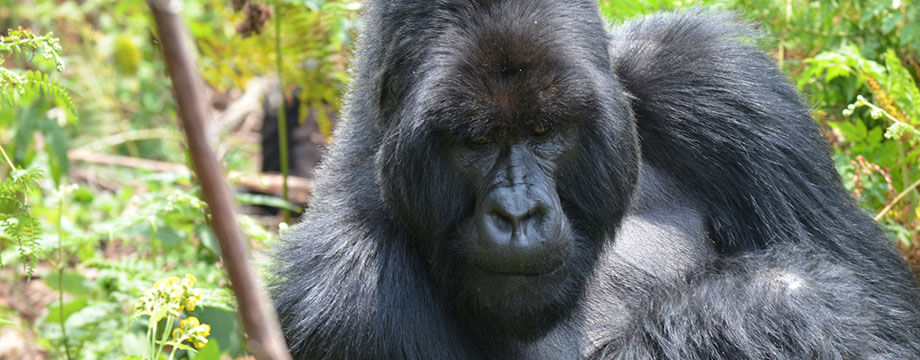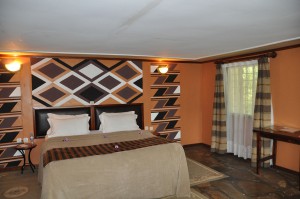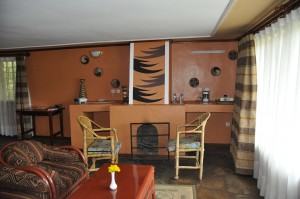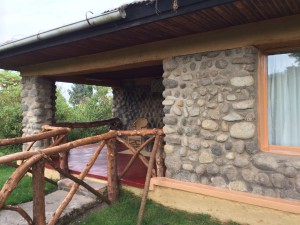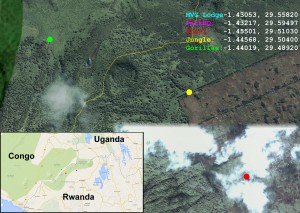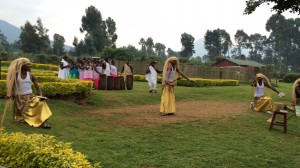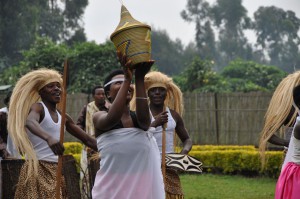My Story of Tracking Gorillas in Rwanda and the Congo
It is a very special privilege awarded to very few people. I am honored to have been blessed with the opportunity to experience what I consider to be one of the greatest adventures in my life; tracking gorillas in the remote mountain jungles of Rwanda and the Congo. The sights, sounds and emotions of those two days will remain with me always as some of my most cherished memories of all time.
The idea for a Gorilla Trek had always been a dream of mine. Gorillas are my absolute favorite animal. Once I started planning this adventure to Africa, I knew above all else it had to include Gorillas (and Flamingos, which are Kathy’s absolute favorite animal). It took lots of research and planning to pull this off. The permits are the most difficult part of the process. There are only so many permits issued, and when they are gone, they are gone. We managed to secure our 4 permits about 9 months before the trip. Early planning is the key to success with this type of adventure.
After several days of safari adventure in the Serengeti, Ngorongoro, Manyara and Arusha, we boarded a small 12 seat bush plane for our trip to Rwanda. After about 4 hours of flying, with one stop for immigration, and 3 stops to let other passengers off at various camps, we arrived at the capital city of Kigali. There we were met by doctors and paperwork, asking about our travels and our risk from exposure to Ebola. We were fine. We then cleared immigration, and met Jimmy just outside customs. Jimmy would be our guide for the duration of our stay in Rwanda. Since it was late, he chauffeured us straight to our hotel. We had a nice dinner at the hotel restaurant and then turned in for the night. The next morning, we had breakfast at the hotel restaurant, and then met up with Jimmy mid-morning.
We spent several hours driving northwest from the Rwandan capital city of Kigali to the small town of Kinigi. There, the Mountain Gorilla View Lodge is located near the edge of the Volcanoes National Park Headquarters, at the foot of Mt Karisimbi. Volcanoes National Park shares a border with Mgahinga Gorilla National Park in Uganda, and Virunga National Park in the Congo (DRC). These three national parks form one large park area, specifically for the protection of the Mountain Gorilla habitat. It was late afternoon when Kathy and I arrived at the Mountain Gorilla View Lodge. It has 30 private chalets for guests, and a main lodge that contains the restaurant, a bar, gift shop and a relaxing lounge area. After a buffet style meal, we headed back to our chalet for a quiet evening.
Shortly after arriving back at our chalet, someone knocked on our door. I opened the door and was greeted by a man who was there to start our fire. He spent a few minutes stacking wood in the fireplace and soon thereafter we had a roaring fire in the fireplace. It was just perfect!
We spent our first evening just hanging out, relaxing by the fireplace. After a while we turned in, hoping for a good night’s sleep, excited for the adventure coming in the days ahead.
The First Gorilla Trek
The alarm clock started playing Henry Mancini’s “Moon River”. It was 5:30am. The sun would not be up for another hour. Kathy and I jumped up from our bed eagerly, excited for the days’ adventure ahead. We quickly dressed, grabbed the camera gear and headed down the path from our cabin to the main lodge. We entered the restaurant area and had a quick breakfast of eggs, toast, bacon and hot tea. It is my belief that you can never go wrong with an English breakfast.
We met our Rwandan guide, Jimmy, at the front of the lodge. We all got into the Land Cruiser and by 6:30am we were on our way to the Volcanoes National Park Headquarters. Once at the Park HQ, we handed over our passports so they could be matched up to the tracking permits we had obtained 9 months previously. While we waited around for this process to conclude, free coffee and tea were provided. A local troupe of dancers kept us entertained with their aerobatic antics and pulsing drums. Kathy dropped a couple of dollars into the donation can. The international rule of street performers applies here too; if you stop, watch and listen, you owe them a buck.
Jimmy did a little politicking on our behalf to make sure we were assigned to the best guide tracker, and best gorilla group. It helps that he used to be the union leader for all the guides. He knows everybody in this business; the guides, the trackers, the rangers and even the politicians in charge of the park. It paid off. Our assignment: Amahoro. One of the largest groups (over 20 gorillas) and one of only two groups in the entire region with multiple silverbacks.
There are 18 family groups of habituated gorillas in this mountain range shared between these three countries (Rwanda, Uganda, and Congo). 10 of these family groups are allowed to be visited by tourists such as myself. The other 8 groups are off limits to tourism and tracking. They are visited occasionally by rangers and scientists. Think of them as the control group. By comparing how the gorillas fare from the tourism groups to those without, they can better determine if the tourism is harming the gorillas in any way.
I would like to mention that the very first family group of gorillas that was habituated to humans took place right here in these mountains. This was done in the 1970’s and early 1980’s by Dian Fossey. Her story of living and working with the gorillas was the bestselling book and movie called “Gorillas in the Mist”. That story took place in these very same mountains.
Eugene was our tracking guide for the day. He’s been working with the gorillas since 1999, and was one of the original members of the team that habituated Amahoro group. Our group consisted of Kathy and myself, a couple from Lisbon, Portugal, and 2 couples from Melbourne, Australia. Eugene, our guide, led the group. There were 4 trackers. Two of the trackers were already in the mountains tracking the gorillas. The other two trackers were with our group. They stayed in touch via radio to help guide us to the right spot, as the gorillas are always on the move, foraging for food. We also had two armed park rangers with us. They were there for protection against other beasts in the jungle, not for protection from the gorillas.
Our entire party loaded up into four vehicles and started the drive towards the point where the hike would begin. It took about 50 minutes to get to the remote village where we parked our vehicles. Once there, we were asked how many porters we needed. Kathy and I hired two, one for each of us. My porter’s name was Anastais, and Kathy’s porter’s name was Mike.
The porter system is an important part of sustaining the gorilla eco-tourism. These guys used to be the poachers that killed the gorillas and other animals. Now they are hired out to help the tourists such as myself. They carried our jackets, backpack, and cameras. The cost was $15 for the day. The two couples from Melbourne decided they didn’t need a porter. I called them out on it. It’s not so much if they need a porter or not, as much as the porter needs a job. If you don’t hire him, he doesn’t get paid that day. They coughed up the $15 and hired one to share amongst the four of them. I suppose that’s better than nothing.
